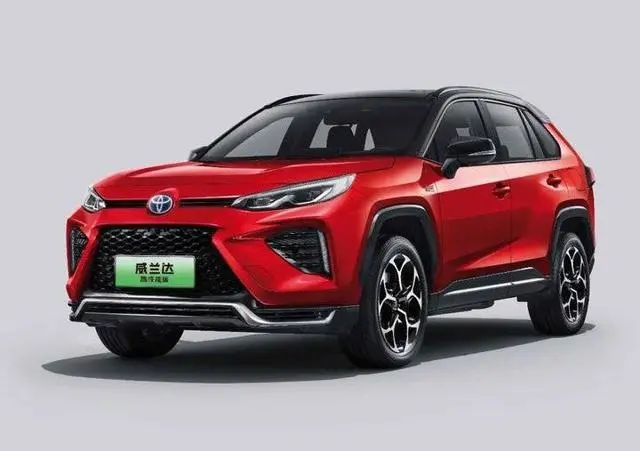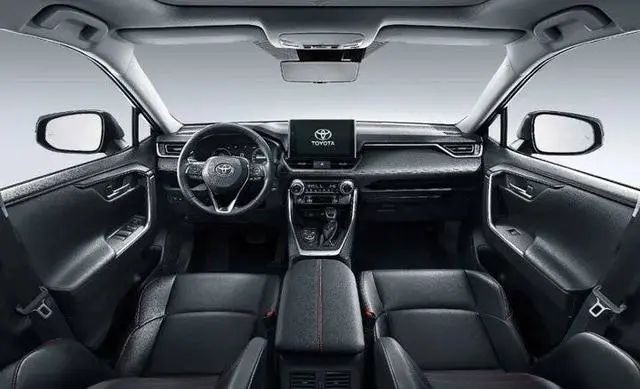Author: He Yan
Toyota has always been a leader in the field of hybrid cars, and the Toyota Hybrid System (THS) has long been synonymous with hybrid technology.
In recent years, Toyota has begun exploring the field of plug-in hybrid cars, and Guangzhou Toyota has released the first plug-in hybrid car model, the Venza PHEV, which is regarded by the industry as Toyota’s pioneering work in this field.

It is understood that this model is called the “high-performance” Venza, and a total of three models have been launched: Ingenious version, Ingenious four-wheel drive version, and Stimulated four-wheel drive version. The price range is between 258,800 and 2,998,000 yuan.
With the formal launch of the “high-performance” Venza, Guangzhou Toyota’s Venza family of car models has expanded to 15, including three power options: 2.0L naturally aspirated, 2.5L hybrid, and 2.5L plug-in hybrid, as well as three types of four-wheel drive systems: DTC intelligent four-wheel drive, DTV dynamic vector four-wheel drive, and E-FOUR electronic four-wheel drive.
Since its launch in February 2020, the cumulative sales of Guangzhou Toyota Venza have exceeded 110,000 vehicles. In April of this year, Venza achieved sales of 10,777 units, with four-wheel drive models accounting for 40% and E-FOUR electronic four-wheel drive accounting for 44% of hybrid sales.
With the overall strong sales performance of existing car models, can the newly launched “high-performance” model inject new momentum into the Venza family?
What is “high-performance” version?
What is the “high-performance” Venza?
High-performance cars usually refer to those with large-displacement engines that have undergone professional powertrain and chassis technology calibration, and are mainly used for track driving. However, the “high-performance” of Venza is different.
It is understood that “high-performance” Venza is based on a mature and reliable Toyota THS hybrid system, adding high-power, large-capacity batteries and chargers.
Previously, Venza had a HEV hybrid version, which used a 2.5L Atkinson cycle engine and an E-CVT gearbox as the powertrain. The PHEV version is an expansion of this hybrid system, with improved power performance. The engine power has been slightly increased to 132 kW, and the front motor power has also been increased from the 88 kW of the hybrid version to 134 kW. The rear axle of the E-Four four-wheel drive model also has a rear motor that can output a maximum of 40 kW and 121 N·m, and the maximum output power of the whole vehicle is 306 Ps.
 The powerful propulsion system brings impressive 0-100 km/h acceleration performance in just 6.6 seconds, making the “high-performance version” of the RAV4 prime the leader in the compact SUV market. According to some test drive results, the “high-performance version” of the RAV4 prime is currently the fastest Toyota-made domestic car.
The powerful propulsion system brings impressive 0-100 km/h acceleration performance in just 6.6 seconds, making the “high-performance version” of the RAV4 prime the leader in the compact SUV market. According to some test drive results, the “high-performance version” of the RAV4 prime is currently the fastest Toyota-made domestic car.
In addition, the RAV4 prime has three sets of four-wheel drive systems: DTC intelligent four-wheel drive, DTV dynamic vector four-wheel drive, and E-FOUR electronic four-wheel drive, with the PHEV version’s four-wheel drive system being the best in terms of performance. Therefore, in terms of power and four-wheel drive performance, the RAV4 prime PHEV can be considered the high-performance version of all RAV4 series.
According to official information, in full electric mode, the RAV4 prime has a comprehensive fuel consumption of only 1.1 L per 100 km and a total range of up to 1,152 km. Among them, the pure electric driving mode has a range of 95 km. Combined with the heat pump automatic air conditioning system, it can ensure pure electric endurance in cold weather, and can meet the requirements of daily commuting with zero fuel consumption and zero emissions. When the power battery is low, the RAV4 prime can automatically switch to the HEV hybrid driving mode, with a comprehensive fuel consumption of only 5.2 L per 100 km in HEV mode and a range of up to 1,057 km.
It is worth mentioning that in the case of unreliable charging infrastructure, the THS system installed in the RAV4 prime PHEV guarantees excellent fuel economy and driving performance. In short, even without charging, the PHEV can still provide fuel economy similar to that of a THS hybrid system, which is better than traditional fuel vehicles.
Is it competitive?
In the Chinese automobile market, there are not many compact plug-in hybrid SUV models from joint ventures. There are only a few such as Citroen C5 Aircross PHEV, Honda CR-V e+ hybrid, and Toyota RAV4 Rongfang dual-engine E +.
In terms of price range, the recommended prices of Citroen C5 Aircross PHEV range from 234,700 RMB to 264,700 RMB, the price range of Honda CR-V e+ hybrid is 273,800 RMB to 299,800 RMB, and the recommended price of the FAW-Toyota RAV4 Rongfang dual-engine E + varies from 248,800 RMB to 296,800 RMB. Compared with its competitors, the recommended price range of the “high-performance version” of the RAV4 prime from Guangzhou Toyota, 258,800 RMB to 299,800 RMB, is also within a normal range.Compared with its sibling Toyota RAV4, the starting price of the “high-performance” version of Toyota Wildlander is 10,000 yuan more expensive, and the high-end model is 3,000 yuan more expensive. In fact, Wildlander is a sister model of RAV4 and both are sold in the Chinese market. They are similar to the relationship between Toyota Corolla and its sister model Levin.
Why is the starting price of the “high-performance” version of Wildlander more expensive?
Compared with the two-wheel drive urban Pro of RAV4 Glory E+ with a price of 24.88 million yuan, the Wildlander high-performance two-wheel drive engine version with a price of 25.88 million yuan has more configurations, such as front/rear parking radar, reverse image, electric sunroof, HUD head-up digital display, main driver seat electric adjustment, GPS navigation, vehicle networking, etc.
Compared with the four-wheel drive flagship Pro of RAV4 Glory E+ with a price of 29.68 million yuan, the “high-performance” version of Wildlander with four-wheel drive engine version has more configurations, such as lane assist, reversing side warning system, induction back box, and interior ambient lighting.
In comparison, the “high-performance” version of Wildlander has more configurations, but its cost performance is not high. Insiders believe that the configuration of Toyota’s domestic cars has always been behind that of independent and German brands. Compared with other brands, the advantage of the “high-performance” version of Wildlander is not significant. Both the “high-performance” version of Wildlander and RAV4 Glory E+ are based on the Toyota New Global Architecture-TNGA-K platform, with little difference in product strength. However, the recognition and cost performance of RAV4 Glory E+ are higher than Wildlander. The only difference is that the “high-performance” version of Wildlander provides a low-profile four-wheel drive model, and the top-equipped model has higher configuration.
In short, the “high-performance” version of Wildlander and the sibling RAV4 Glory E+ have their own advantages. Both are Toyota’s layout in China’s new energy market to meet the needs of users for plug-in hybrid models.
As early as 2015, Toyota announced the “Environmental Challenge 2050” strategy, proposing to reduce the CO2 emissions of new cars during global journeys in 2050 by 90% compared with 2010, which coincides with China’s carbon neutrality goal. Masahiko Maeda, the executive director and CTO of Toyota, said in a media interview: “The ultimate goal of promoting electrification is to achieve carbon neutrality and sustainable development.”
The Public Relations Director of Guangzhou Toyota Marketing Department, Shi Xiangfeng, once stated that “Guangzhou Toyota will release multiple products to the domestic market in 2021, hoping to maintain a high-quality growth trend to strive for sales exceeding 800,000 in 2021 and pass the milestone of one million sales in 2022.”
The “high-performance version” of the Venza is an essential model for Guangzhou Toyota to reach the goal of 800,000 sales. Insiders indicate that the “high-performance version” of the Venza, which belongs to Guangzhou Toyota, and the RAV4 by FAW Toyota, which has just entered the market, have limited competitors in the subdivision field, and there is a possibility of “internal competition” between the two joint-venture companies, depending on the sales.
This article is a translation by ChatGPT of a Chinese report from 42HOW. If you have any questions about it, please email bd@42how.com.